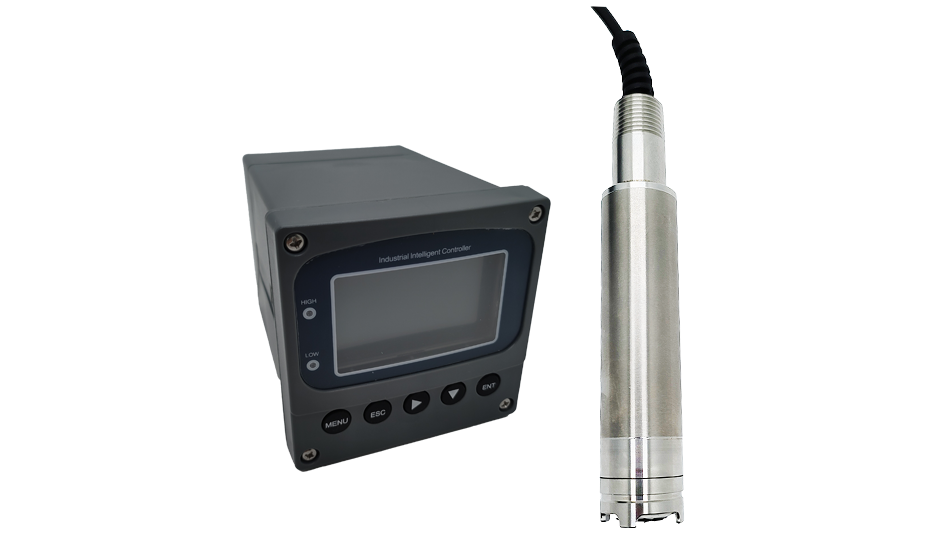Дар талу теппаҳои водии Крествью, як хоҷагии оилавӣ бо номи чарогоҳҳои сабз дар зери дасти деҳқони калонсол Дэвид Томпсон ва духтари ӯ Эмили рушд мекард. Онхо хосили фаровони чуворимакка, лубиё ва сабзавоти гуногун меруёнданд, вале мисли бисьёр дехконон ба мукобили куввахои пешгуии табиат мубориза мебурданд. Ҳашароти зараррасон, хушксолӣ ва обу ҳавои пешгӯинашаванда мушкилоте буданд, ки онҳо мунтазам рӯ ба рӯ мешуданд. Аммо сифати обтаъминкунӣ онҳоро бештар ба ташвиш овардааст.
Водии Крествью хонаи як ҳавзи ороме буд, ки аз рӯдхонаи хурд ғизо мегирад, ки барои чарогоҳҳои сабз хуни ҳаёт буд. Барои нигоҳ доштани саломатии зироатҳои онҳо, Дэвид медонист, ки нигоҳ доштани сифати баланди об ҳатмист, аммо ӯ роҳи боэътимоди чен кардани сатҳи оксигени гудохташуда дар ҳавз надошт. Токсинҳо аз заминҳои кишоварзии атроф ва таъсири тағирёбии иқлим ба оби онҳо таҳдид карданд, ки бевосита ба ҳосили онҳо таъсир расонд. Дэвид дар бораи саломатии зироатҳои онҳо рӯҳафтода ва нигарон буд, аксар вақт кӯшиш мекард, ки сифати обро бо тахминҳо назорат кунад.
Яке аз нисфирӯзии офтобӣ Эмили ба болои теппа давида омад, ки ҳаяҷон аз чеҳрааш паҳн мешуд. "Падар, ман дар бораи ин сенсорҳои нави оптикии оксигени гудохташуда шунидам! Онҳо барои деҳқононе мисли мо бояд бозигарон бошанд!"
Вақте ки Эмили фаҳмонд, ки ин сенсорҳо чӣ гуна кор мекунанд, Дэвид ба ҳаяҷон, вале шубҳанок гӯш дод. Баръакси озмоишҳои анъанавии кимиёвӣ, ки натиҷаҳои таъхирёфта ва таҷрибаи заруриро пешниҳод мекарданд, сенсорҳои оптикии оксигени обшуда хонишҳои фаврӣ ва пайвастаро таъмин карданд. Онҳо технологияи пешрафтаро барои чен кардани нури аз ҷониби молекулаҳои оксиген дар об ғарқшуда истифода бурда, ба деҳқонон дар вақти воқеӣ дар бораи сифати об маълумот медоданд. Аз ин дониш рӯҳбаланд шуда, онҳо тасмим гирифтанд, ки ба сенсор сармоягузорӣ кунанд.
Бозёфти табдилдиҳанда
Бо сенсори оптикии обшудаи оксиген дар назди ҳавз насб карда шуд, Эмили маълумотро дар смартфони худ назорат мекард. Дар худи рӯзи аввал онҳо дарёфтанд, ки сатҳи оксигени гудохташуда аз ҳадди идеалӣ камтар аст. Бо ин дониш мусаллаҳ шуда, Эмили ва Дэвид зуд амал карда, ба ҳавз аэраторҳо илова карданд. Дар давоми чанд рӯз, сенсор афзоиши сатҳи оксигенро нишон дод.
Вақте ки онҳо дар тӯли ҳафтаҳои оянда обро назорат мекарданд, сенсор ба онҳо дар муайян кардани шаклҳо ва тағироти мавсимӣ кӯмак кард. Дар охири тобистон, вақте ки об гарм шудан гирифт, онҳо кам шудани оксигени ҳалшударо мушоҳида карданд. Ин онҳоро водор кард, ки дар атрофи ҳавз растаниҳои сояафканро ба кор андозанд, то обро хунук кунанд, муҳити солимтар барои ҳаёти обӣ фароҳам оранд ва ҳосили зироатҳои онҳо сифати мувофиқи обро таъмин кунанд.
Хосили фаровон
Манфиатхои хакикии сенсор дар мавсими хосилгундорй аён гардид. Зироатхо мисли пештара шукуфта, сабзахои сералаф дар паси водй баланд буданд. Дэвид ва Эмили ҳосили беҳтарини худро дар тӯли солҳо ҷамъоварӣ карданд - ҷуворимаккаи қавӣ, солим ва сабзавоти пурқувват, ки дар бозори фермерҳои маҳаллӣ шодӣ ба вуҷуд овард. Дехконони сахрохои хамсоя ба назди онхо омаданд, то сирри онхоро фахманд.
"Сифати об! Ҳамааш дар бораи оксиген дар об аст", - бо ифтихор шарҳ дод Эмили. "Бо сенсори оптикии оксигени мо, мо метавонем ба тағирот зуд вокуниш нишон диҳем. Он ба мо кӯмак кард, ки экосистемаи пешрафтаро нигоҳ дорем."
Вақте ки сухан дар тамоми водии Крествев паҳн шуд, деҳқонони бештар ба технология шурӯъ карданд. Ҷомеа системаи нави дастгирӣ пайдо кард, ки дар он маълумот ва таҷрибаҳои беҳтаринро мубодила карданд. Онҳо як шабакаи ғайрирасмӣ таъсис доданд, то сифати об ва таъсири раднашавандаи он ба саломатии зироатҳоро муҳокима кунанд. Дигар онҳо танҳо бо муборизаи худ мубориза намебурданд; ба ҷои ин, онҳо як қисми ҳаракати калонтар ба сӯи устуворӣ ва устуворӣ буданд.
Ояндаи устувор
Пас аз моҳҳо, вақте ки фаслҳо иваз шуданд ва ферма ба зимистон омода шуд, Дэвид дар бораи он ки онҳо то чӣ андоза дур омадаанд, фикр мекард. Сенсори оптикии оксигени гудохташуда на танҳо таҷрибаҳои кишоварзии онҳоро тағир дод, балки инчунин дар дохили ҷомеаи онҳо робитаҳои бардавом барқарор кард. Онхо акнун бештар аз дехконон буданд; онҳо идоракунандагони муҳити зист буданд, ӯҳдадор буданд, ки об, зироат ва замини дӯстдоштаи худро муҳофизат кунанд.
Бо ифтихор Дэвид ва Эмили дар канори ҳавз ҷамъ омада, ғуруби офтобро аз болои обҳои пурталотум тамошо карданд. Ҳаво бо садоҳои табиат зинда буд ва дар паси онҳо зироатҳо қавӣ меистоданд. Онҳо медонистанд, ки онҳо ба сӯи ояндаи устувор қадамҳои пурмазмун гузоштаанд, ки оби солим ба ҳосили солим оварда мерасонад ва умри дарози хоҷагии онҳоро барои наслҳои оянда таъмин мекунад.
Ҳангоме ки онҳо якҷоя истода буданд, Эмили ба падараш табассум кард: "Кӣ медонист, ки сенсори хурд метавонад ин қадар фарқияти калон кунад?"
"Баъзан, ҳалли соддатарин қудрати бузургро дар бар мегирад. Мо танҳо бояд омода бошем, ки онҳоро ба оғӯш гирем", - ҷавоб дод Дэвид ва ба манзараи шукуфон бо умед ба оянда нигарист.
Барои маълумоти бештари сенсори сифати об,
лутфан бо Honde Technology Co., LTD тамос гиред.
Email: info@hondetech.com
Вебсайти ширкат: www.hondetechco.com
Вақти фиристодан: январ-22-2025


